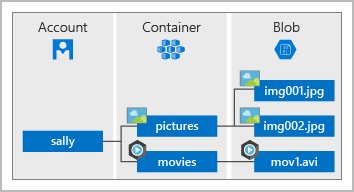Microsoft Azure: Storage Services
As part of the Microsoft Enterprise Skills Initiative I am looking into different topics in Azure and summarize my learnings. This post is about Azure Storage Services
Azure Storage services offers different storage options for different purposes, each one with security, redundancy, and scalable access to the stored data in mind. In order to be able to use Azure Storage you have to create an Azure Storage account.
Azure Disk Storage provides solid-state drives (SSDs) or traditional spinning hard disk drives (HDDs) for virtual machines. There are two types of disks
- Unmanaged Disks require a storage account before you can create a new disk. It gives you full control over all the data but you have to take care by yourself for encryption, data recovery, …. There is also a hard limit of IOPS.
- Managed Disks are managed by Microsoft Azure and you don’t need any storage account while created new disk. Since the storage account is managed by Azure you do not have full control of the disks that are being created. Compared to unmanaged disks, managed disks abstracts underlying storage account/blob associated with the VM disks, have no throttling, has role based access control and storage encryption by default
Azure Blob Storage is an unstructured object store which allows to store text or binary data, not limited to common file formats. Objects are stored in blobs, which belong to a container.

Azure Files Storage is a managed file share service offering Server Message Block (SMB) and Network File System (NFS) shares. You can access the files from anywhere in the world, by using a URL that points to the file.
Based on the usage scenario (access frequency, retention, …) for your blob data, Azure Blob Access tiers allows you to optimize the costs by defining an access tier, which impacts the availability, latency and minimum storage duration:
- Hot - Optimized for storing data that is accessed frequently.
- Cool - Optimized for storing data that is infrequently accessed and stored for at least 30 days.
- Archive - Optimized for storing data that is rarely accessed and stored for at least 180 days with flexible latency requirements, on the order of hours.
